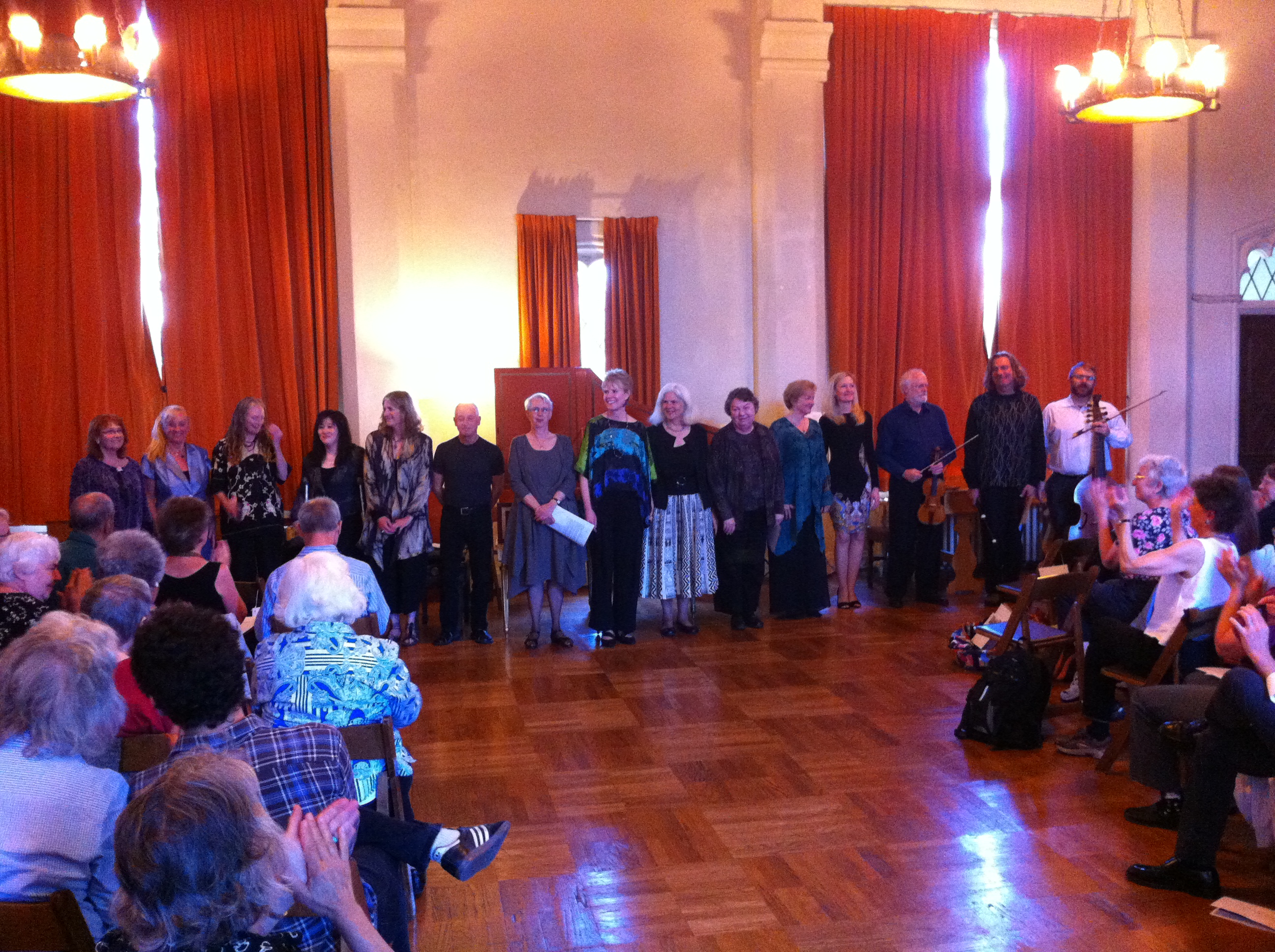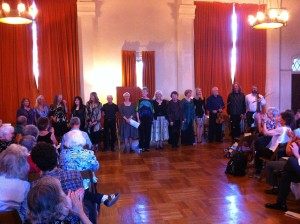By Lee T. Lovallo, Antelope, California
The stately leaded glass Venetian Ballroom of the late Gothic revival Berkeley City Club, not far from the University, was the site of a respectful and altogether moving program in honor of a great musician and friend, Gustav Leonhardt. On a beautiful afternoon in June 2012, more than a hundred musicians, scholars, instrument builders, music lovers and friends from all over the United States gathered to hear tributes spoken and performed by students of Leonhardt, whose inspired teaching, sensitive playing and boundless enthusiasm over a sixty-year career touched many and influenced not only his students but also the direction of early music performance throughout the world. The well-organized and very well-attended tribute as part of the Early Music America Berkeley Festival and Exhibition was inspired and presented by former Leonhardt student Elaine Thornburgh and others of the Western Early Keyboard Association and by Gilbert Martinez of MusicSources, a Bay Area center for historically informed performance.
The program began with an eloquent appreciation by Lisa Goode Crawford, who spoke for many of Leonhardt’s students in praising the qualities of his instruction: his emphasis on expressive playing—how to make dynamic shapes, how to vary the degree of legato, and how to think about Baroque music and its affects. The influence of Leonhardt on the early music scene in the United States was documented in a program booklet that gave the names of fifty-five students—a partial listing of many more—who had studied with him in the Netherlands. Many of his pupils, now well-known in their own rights, have carried his ideas in turn to countless music students and audiences in America and beyond.
As is most fitting for such a program, the tone of which was marked by deeply felt respect and affection, the centerpiece was an hour of works by late Renaissance and Baroque masters—Sweelinck, Froberger, Louis Couperin, Frescobaldi, Forqueray and Bach, to name a few—performed on harpsichord and spinet, and also including the Trio Sonata from Bach’s Musical Offering for flute, violin, harpsichord and viola da gamba. In all, a dozen of Leonhardt’s harpsichord students played what one listener described as “some of the most soulful, mournful and joyous” music he had ever heard, the effect of which was no doubt heightened by the sensitive request to withhold applause until the end of the program. Keyboardists performing were Elaine Funaro, Webb Wiggins, Lenora McCroskey, Tamara Loring, Linda Burman-Hall, Elaine Thornburgh, Elisabeth Wright, JungHae Kim, Lisa Goode Crawford, Charlotte Mattax Moersch, Jillon Stoppels Drupree , and Margaret Irwin-Brandon. The Trio Sonata included superb contributions by Stephen Schultz, Anthony Martin, Joshua Lee and Lisa Goode Crawford. In conclusion the gathered musicians and listeners sang and performed together the final chorale from Bach’s The Passion According to St. John, “Lord, may thy dear angel at mine end bear my soul unto the lap of Abraham,” an apposite reflection of Leonhardt’s own faith.
Performers at the Gustav Leonhardt tribute program in Berkeley, left to right: Linda Burman-Hall, Margaret Irwin-Brandon, Tamara Loring, JungHae Kim, Elaine Funaro, Webb Wiggins, Lisa Goode Crawford, Jillon Stoppels Dupree, Elaine Thornburgh, Lenora McCroskey, Elisabeth Wright, Charlotte Mattax Moersch, Anthony Martin, Stephen Schultz, Joshua Lee.
Following the performance many of the performers and audience gathered close by at Musical Offering, a cafe and CD store, for a reception to share memories and stories before continuing with the rest of this penultimate day of the Berkeley Festival and Exhibition, a day that ended fittingly with a memorable performance by the American Bach Soloists under Jeffrey Thomas of Bach’s Trauerode.
In a lengthy remembrance written for the program booklet by Alan Curtis, another student of Leonhardt and now a renowned scholar, teacher and performer himself, spoke not only of the Dutch master’s strongly held but not immutable opinions on music but also of Leonhardt’s other passions—collecting furniture, porcelain, Delftware and silver, reading Thomas Mann and Somerset Maugham, appreciating the art of Cézanne—a devotion that is reflected in many of his students’ interests in the humanities and the visual arts. Alan Curtis also wrote of Leonhardt’s sense of humor: an improvised sonata that he described as possibly one of Scarlatti’s only because he “didn’t know all of them,” and, following a masterclass he gave in Texas, his asking a waitress in a restaurant there for a “Fro-burger.”
Among the many other recollections shared in the program were Elaine Funaro’s listening to a “very personal and moving rendition of the Gibbons pavan” played by Leonhardt at his home, which experience she returned by playing the pavan for the audience in Berkeley. No doubt Elisabeth Wright’s praise for Leonhardt’s teaching is shared by all his students: “It was an extraordinary education by an extraordinary man who left an indelible mark on us all.” For myself, who came to appreciate Leonhardt through his recordings of organ music, particularly the works of Sweelinck, there could be no more eloquent testimony to Leonhardt’s art than that provided on June 8, by Webb Wiggin’s immensely sensitive playing of Sweelinck’s heartfelt Pavana Lachrimae, a tearful and noble pavane indeed.

